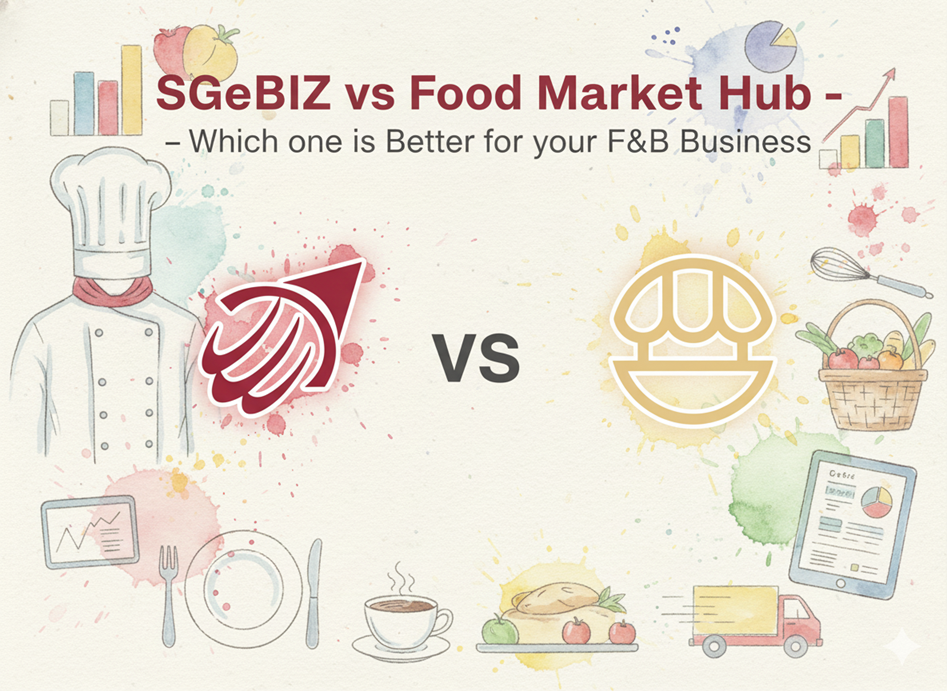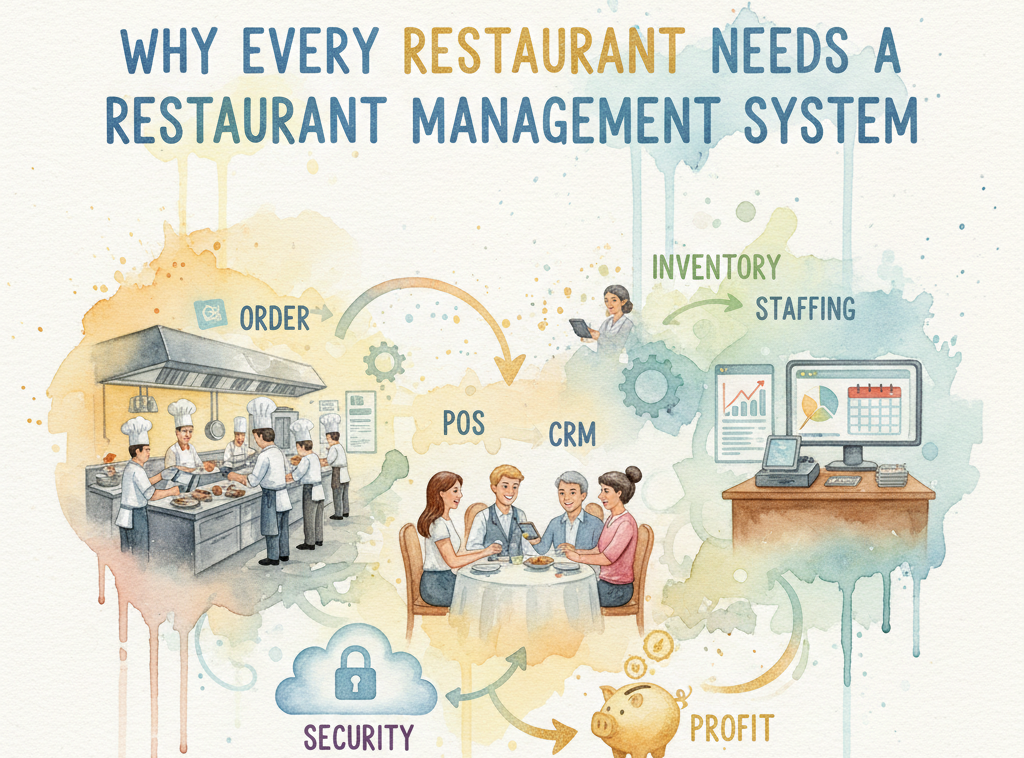Kitchen Display System - The Benefits For Busy Restaurants

If you own a busy restaurant, you will know that manually taking down orders and sending them to the kitchen is time consuming and a wastage of human resources.
Wouldn’t it be simpler for you to instantly send kitchen order tickets to the kitchen as soon as you take the order from your customers? Here’s where a Kitchen Display System comes into the picture.
A Kitchen Display System automates the process of sending order tickets straight to the kitchen as soon as the order is entered in the system. The Display System is placed in a convenient location in the kitchen of your restaurant so that your staff and management can be updated instantly.
However, there is much more to a Kitchen Display System (KDS) than order taking.
In this post, we will be talking about the main features of a KDS, and all the benefits of having a KDS in your restaurant kitchen. You can use this to check whether the Kitchen Display System that you want to invest in for your restaurant has the necessary features and benefits that you desire.
The Features of a Kitchen Display System
Before you decide to invest in a KDS, you need to first find out whether the system has all the features that you are looking for.It helps to research a few different software before finally deciding which one you want to go with.
A basic Kitchen Display System will have the following features:
Order Manager:
An order manager feature helps you segregate orders based on the type of course they are. For example if you have 5 active tables and three of them have ordered dessert, the order manager groups these orders together so that it is easy to prepare and send them out together.

This will make it easier and quicker to prepare similar kinds of dishes together and send them out on time. You could choose to program rules such as time of order, number of items, etc.
Meal Cook Times:
A KDS can also provide information about the cook times of each meal so that preparation of meals can be planned out properly. Say, for instance, there are a few items in an order that have different cook times. The Kitchen Display System can order them in such a way that the items that take the longest time to cook are prepared first, followed by those with shorter cook times.
This ensures that all the items are prepared on time, and the items that have shorter cooking times are not left waiting while the more time consuming ones are cooked. Thus all items on the order can be sent out hot and fresh.
This system avoids situations where some of the items in the order arrive cold, while others are fresh and hot.
Access to Recipes and SOPs:
Another important feature a Kitchen Display System should possess is the ability to store and retrieve recipes and standard operating procedures.
This is a great feature especially if you have new kitchen staff on board or if you have decided to add new items on your menu.
This feature would also be helpful to older staff to just glance through recipes and make their processes faster and easier. You can also choose to upload images and videos to these recipes and SOPs so that everything is clear and easy to follow.
Sending Information to Appropriate Kitchen Sections:
There are many sections in a regular restaurant kitchen, and if you own a big restaurant, it can be hard to communicate between different sections of the kitchen.

A Kitchen Display System sends information to the right sections of the kitchen so that timely orders are given and there is no delay in each section receiving their tasks.
Typically, some of the main sections of a restaurant are the fryer, grill, oven, etc.
POS Integration:
As your restaurant grows, you will probably be investing in POS, or Point Of Sale software. It is important that you make sure that the Kitchen Display System you are purchasing can be integrated with this POS.
Your new KDS should be robust and versatile, able to adapt to updates of your POS system. You must always ensure that your POS system can work along with your KDS when integrated before you decide to invest in one.
The Benefits of Having a KDS for Your Restaurant
As you may have already understood by now, a kitchen display system does more than just displaying orders on a screen in the kitchen. Here are some of the wonderful benefits a KDS offers for your business.
Convenience
The best part of having a KDS for your restaurant is that every member of your kitchen can access the updates on the screen at the same time. Without a KDS, you would need one person to call out the latest orders in detail and then the kitchen staff would begin preparing the order.
With a KDS, however, the whole process becomes more streamlined and efficient. With multiple screens at strategic points in the kitchen, every staff member is able to view the order details at the same time. This saves time and avoids confusion. The screen also shows completed orders and other information that would help make the working of your kitchen smoother.
Prioritization
When your restaurant is very busy, especially at peak hours, it is crucial that you prioritize your orders efficiently. A Kitchen Display System allows you to do this easily by segregating pending orders, new orders, and priority orders.
A KDS plans your staff’s work better, helping them save lots of time and work smarter. Prioritization of orders will ensure that every dish that is sent out is served piping hot and fresh. It will also avoid delays and give your staff room in case they get an order or a recipe wrong.
Lower Customer Wait Times
A KDS allows you to optimize your orders. Without a KDS system, you may have been manually forwarding orders to the kitchen staff. Let’s see how a KDS can optimize your order time and customer wait time.
Let’s take an example scenario. Say you get 5 different orders at one time. You will need a manager to optimize the orders and manually prioritize them using his best judgement. He will then have to convey to his team members what needs to be done, when, and by whom.

This is one of the main disadvantages of doing it manually. The staff is highly dependant on one person (the manager), and the whole process may go hay-wire if he is not present. There is also the high chance of human error that is inevitable.
Now let’s look at this same scenario, but with a KDS. In the Kitchen Display SYstem, your staff would have received all the five orders instantly. And if you have more than one screen in different areas of the kitchen, each member of the staff is able to view the information with ease.
The KDS then optimizes the dishes according to course type, cook times, etc. and categorizes them in meaningful ways. It arranges them in the order they arrived so that the staff knows which meal to send out first. If there are similar dishes that can be prepared together, the cook will be able to cook the separate parts of each meal in batches. This will save your kitchen a lot of cooking time.
The KDS will also predict rough cook times for each meal so that the whole process is efficient. The meals are thus sent out quicker and fresher. Thus the convenience offered by a KDS system reaches the end customer. This not only improves kitchen efficiency, but also greatly enhances customer experience.
Better Management of Inventory
When you have a Kitchen Display System that is integrated with your POS system, you will be able to manage your inventory easily. A KDS helps you to keep track of your inventory and alert you when something needs to be replenished. This helps you pre plan your inventory, order items from restaurant kitchen suppliers, and never run out of stock.
Track Restaurant Performance
When you integrate your POS with a KDS, you will be able to track your restaurant’s performance. It can give you a new perspective on your best selling items, your least popular items on the menu, and the daily performance of your restaurant. You can also easily calculate food cost for your menu.
KDS allows you to calculate the order times and cook times of your restaurant so that you can make better managerial decisions. All this information will also allow you to find out key metrics of your restaurant such as resource stress, operational efficiency, and other analytics.
Train Your Staff Better
Since all standard operational procedures and recipes can be displayed on the screens along with relevant images and videos, you can easily use the KDS to train your restaurant staff. This can lower your training costs and all the material is always available for your staff to view on separate computers.

Hopefully this guide gave you a clear picture of what features you need to look for in a Kitchen Display System, and what benefits your restaurant will have by using a KDS in your restaurant.










